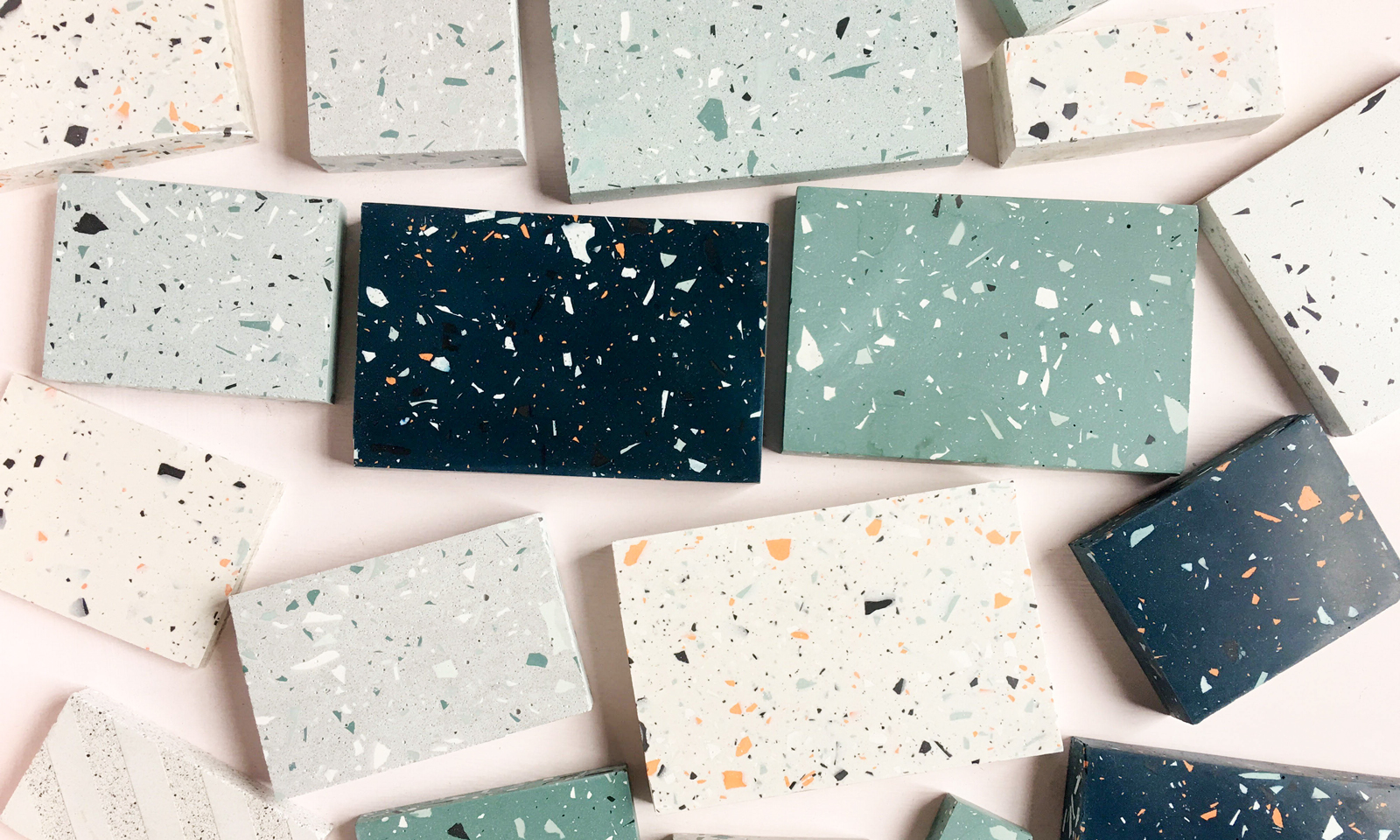
Spectacular Speckles
Monthly Column By Jim Biddulph
The last couple of years have born witness to a seemingly unprecedented rise in the use of the speckle within the world of interiors. Noticing this set me to wondering why this might be; it feels like quite a specific aesthetic after all.
In truth, the speckle has a deep-rooted history within our built environments. Take terrazzo, an inherently speckled material traditionally made of granules of stone and a cementitious binder for example. There is evidence that the Egyptians made surface materials in a very similar fashion, with the Romans taking the process further; even creating their pavements out of the material. After a relative impasse of usage over a number of centuries, the 20th century dawned a new era for terrazzo; with examples as broad as supermarket floors to the Hollywood Boulevard underlining it’s appeal. One could argue that the functionality of such high traffic areas helps to explain its surge in use. For whilst the ability to use precast of poured in place terrazzo makes it a flexible and durable option, the added speckle also covers a multitude of sins.
Now, in the 21st century, it seems that the speckle has taken on a new lease of life. A wave of speckle mania seems to have gripped designers. I noted this a few years back when regularly teaching on design courses, particularly with Surface Design students. It seemed a natural approach too, not forced, and fairly universal. But perhaps science can help explain this a little. Speckle patterns are organic and with it irregular and asymmetric; they are also associated with nature – think dappled light (although lasers also create speckle patterns.) Speckles become enticing to those who are seeking a softer alternative to geometric pattern and continued variation across a surface. Cue young designers like Olivia Aspinall and Katie Gillies as well as surface design brands like Altrock and Foresso. They all work with a terrazzo-like speckle and yet such is the nature of the pattern, they remain distinguishable from one and other. This underlines another interesting factor in that the playful freedom that the speckle offers allows for variation in how they can be created. Chips of wood, large lumps of stone or flecks of coloured Jesmonite can all be easily encapsulated by a binder to form unique speckled surfaces; no two ever the same. And with terrazzo manufacturers like Huget Mallorca creating more playful and varied shape, scale and colour combinations within their products, even more traditional terrazzo takes on this new contemporary feel.
The possibilities created by the simple speckle seem endless. Let’s hope that they are.




